Introduction: In this article, Gena Philibert-Ortega shows how another type of newspaper research – social history – can help you better understand your family history and tell your ancestor’s stories. Gena is a genealogist and author of the book “From the Family Kitchen.”
It probably comes as no surprise to this blog’s readers that I love old newspapers, since so many of my articles are based on newspaper research. Sure, they are great for adding details to my family history – but do you know another reason why I really love newspapers?
Newspapers are a great place to find social history.
What is social history and why is it important to genealogists? Social history is how historical events and everyday life affected your ancestors. Social history is less about the general study of history, which concentrates on the lives of the famous or infamous, and more about the everyday lives of ordinary people. As family historians, we use newspapers to find mentions of our ancestors’ names.
But we should also study historical newspapers to get a sense of what was happening in our ancestors’ everyday lives – the events that affected them, and the news that they discussed with their family and friends.
How can you use old newspapers to add social history to your family history? The following three events and everyday realities are examples of how you can learn more about your ancestors’ lives and tell the story of your family.
World War I Draft
Do you have male family members who registered for the World War I draft? If you answered yes, then have you used the World War I Draft Registrations found online? Three separate registrations (5 June 1917, 5 June 1918, and 12 September 1918) compiled personal information on men ages 18-45 years. Men learned about who, when, and how to register for the draft from the newspaper.
For example, this 1917 newspaper article that appeared before the first registration date is a synopsis of a government publication answering questions about the draft. This newspaper article would have provided your family member with an idea of what to expect, and indicates some of the information you can expect to find – including personal questions about appearance such as whether they were bald or not.
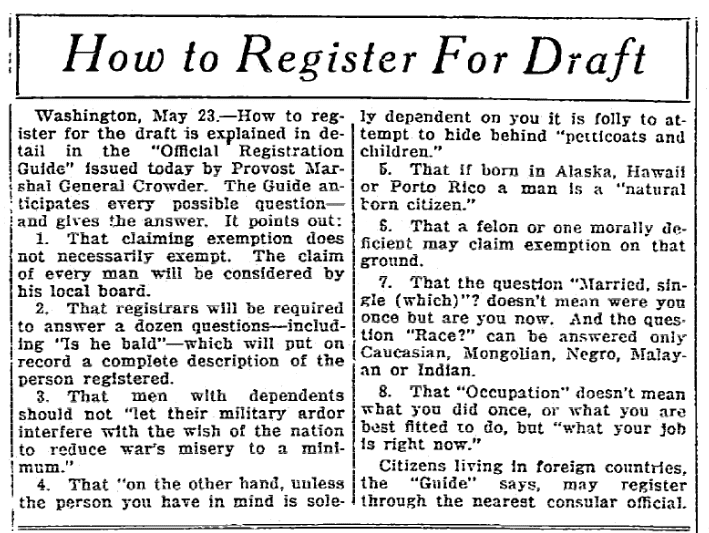
Our ancestors also used the newspaper to ask questions about the draft, such as whether non-U.S. citizens had to register, or if specific occupations were exempt. These question and answer-type articles can help you better understand your ancestors’ time period and the records you use for family history research.
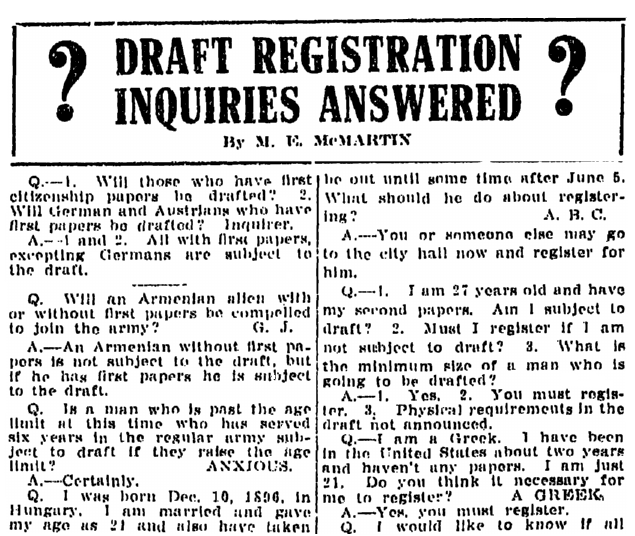
World War II Ration Books
In our country today, food is everywhere. Not only is access to food via a store or a restaurant within either walking distance or a short car ride for most people, but access to all types of food is prevalent. We are lucky in that respect; we can taste the flavors of other countries or enjoy fruit grown in warmer climates year-round. But it was only a few generations ago that our ancestors’ access to food was limited.
You are probably aware that during World War II food was rationed. You might even have some of your family’s ration books with some stamps still intact. But do you know how those ration stamps were used? The newspaper provided information on when ration books were available and how to obtain them, as well as explaining how to use ration stamps.
The first food to be rationed was sugar. Coffee soon followed, as discussed in this 1942 newspaper article that explains the reason for coffee rationing (ships formerly carrying coffee from South America were now carrying ammunition and supplies, plus U-Boats were sinking ships in the South American trade). This newspaper article continues to explain how coffee rationing would work.
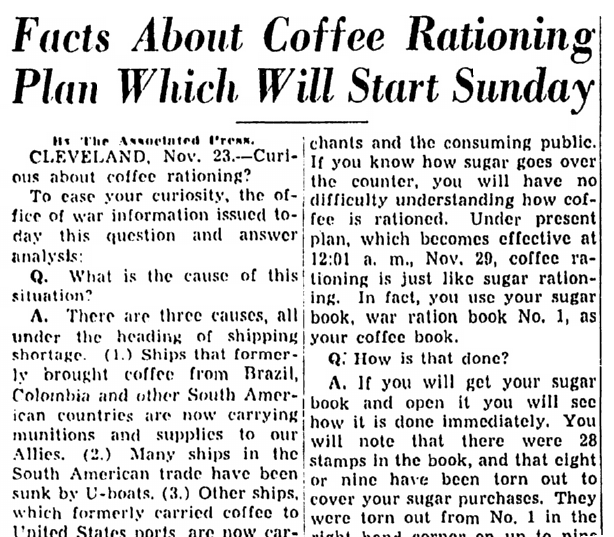
The line was sometimes blurred between marketing and education, as in this 1943 newspaper advertisement where trusted brand “spokesperson” Betty Crocker explains some of the reasons why and how to use ration books, as well as offering booklets on how to make the most of the food you were able to purchase.
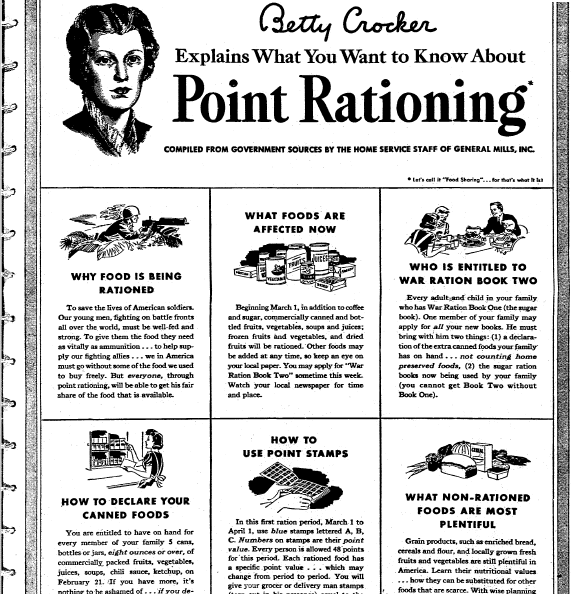
Where Were You When Kennedy Was Assassinated?
I know, you’re probably thinking: “That’s not history, that happened in my lifetime!”
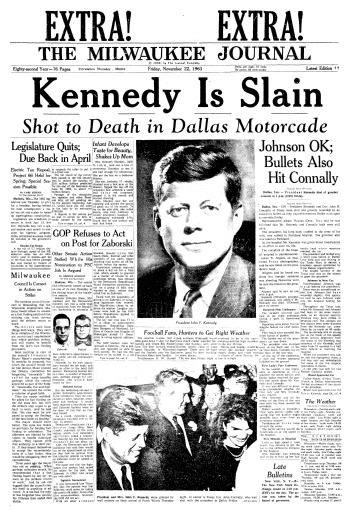
One of the most meaningful family history moments I’ve had is when my mom told my kids about being a high school student the day President John F. Kennedy was killed. My mom was a senior on that November day in 1963. She talked about the sadness and devastation students and teachers in her small-town high school felt when they heard the news. She then added how two days later, on their new television set, she watched Jack Ruby shoot Lee Harvey Oswald. That moment my high school-aged kids went from just learning about the Kennedy assassination in books to truly understanding how it affected their family.
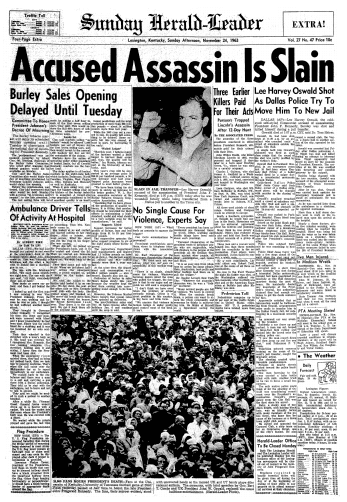
So, what are your memories of the Kennedy assassination? Where were you? How did you hear about it? Did you see Lee Harvey Oswald killed on live television? If you, like me, are too young to have lived through that, ask someone else in your family. Search for newspaper articles about the assassination. Learn more about it from those who lived it. Then write it down. We often forget about preserving the stories and lives of the current generations in our quest for information on the dead. Remember that one day you will be someone’s ancestor and they will be thankful for the gift of your “voice” and memory.
Add Some Social History Today
Now’s the time – on your next newspaper search, don’t just search on names and dates: take your search to a new level and look for the events or activities your ancestor would have taken part in, been affected by, or would have discussed. Describe those and illustrate them with newspaper articles. By doing so you’ll make even the non-genealogists in your family eager to learn about their family history.
Take a look through GenealogyBank’s Historical Newspaper Archives and see what social history you can find about your ancestors’ lives!
